Pumping Tests
Stuart Wells have vast experience in undertaking Pumping Tests in accordance with the Code of Practice for Pump Testing of Water Wells: BS ISO 14686:2003.
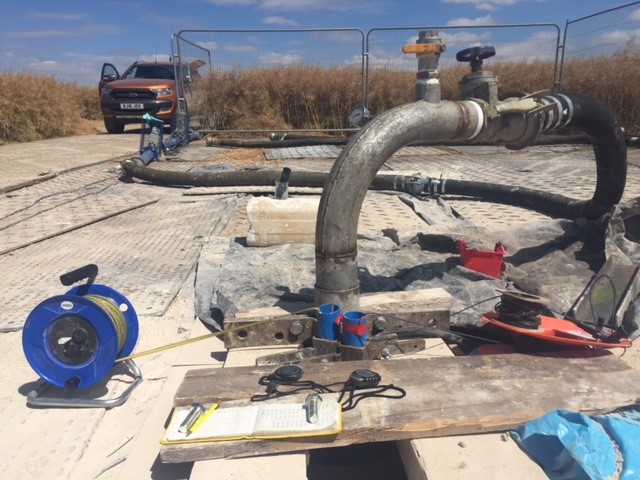 Pumping Tests are a very reliable method to attain information used to investigate and ascertain the hydraulic conductivity, transmissivity and storage coefficient of an aquifer and establishing the hydraulic behaviour of a well.
Pumping Tests are a very reliable method to attain information used to investigate and ascertain the hydraulic conductivity, transmissivity and storage coefficient of an aquifer and establishing the hydraulic behaviour of a well.
Pumping Tests can also determine the effects of pumping or a reduction in groundwater level on other water resources. Together with forming part of or confirming a dewatering or recharge system design. Stuart Wells have the equipment, resources, and capability to undertake large- or small-scale pumping testing both in terms or flow and test period. We can undertake Pumping Test design, as well as the drilling and installation of abstraction and monitoring wells. With the capability to undertake remote monitoring of flow and groundwater levels. We can work as a component to a larger site investigation package or as a stand-alone Principal Contractor.
Pumping test case studies: HS2, Lower Thames Crossing and Rossendale
When undertaking a Pumping test there are five main components to the test:
- Pre-Test Monitoring
- Equipment Test
- Step Test
- Constant Rate or Constant Head Test
- Recovery Test
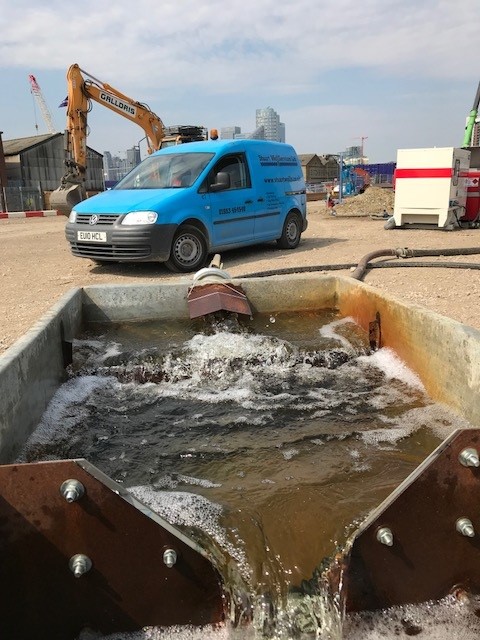
Pre-Test Monitoring
Groundwater levels in all pumping and monitoring points as well as other water resources are monitored and recorded prior to any active pumping to establish background levels and behaviour. Normally data is manually recorded a minimum of twice daily, with transducers logging at 1-hour logging frequencies for at least 24 hours, this is extended to a minimum 48 hours in tidal conditions.
Equipment Test
The Equipment Test ensures that the all pumping equipment, discharge measuring devices, flow meters, v-notch tanks and water level monitoring equipment are functioning correctly. It furthermore allows for the gathering of excess data to allow planning of subsequent Pumping Tests.
Step Test
The objective of a Step Test is to establish the short term yield of a well. This is determined and plotted against water level draw-down data to determine a flow rate for the constant rate or level test phase, this rate should effectively stress the aquifer over an extended period. The testing comprises of pumping from an abstraction well in a series of steps at incremental and increasing flow rates. Normally 4 or 5 no. steps are undertaken, each at a duration of 100mins, followed by a recovery test. In accordance with BS ISO 14686:2003 groundwater levels and abstraction flow rates are monitored at the following frequencies.
| Elapsed Testing Time | Monitoring Frequency |
| 0 to 10 mins | every 1 minute |
| 10 to 20 mins | every 2 minutes |
| 20 to 60 mins | every 5 minute |
| 60 to 100 mins | every 10 minute |
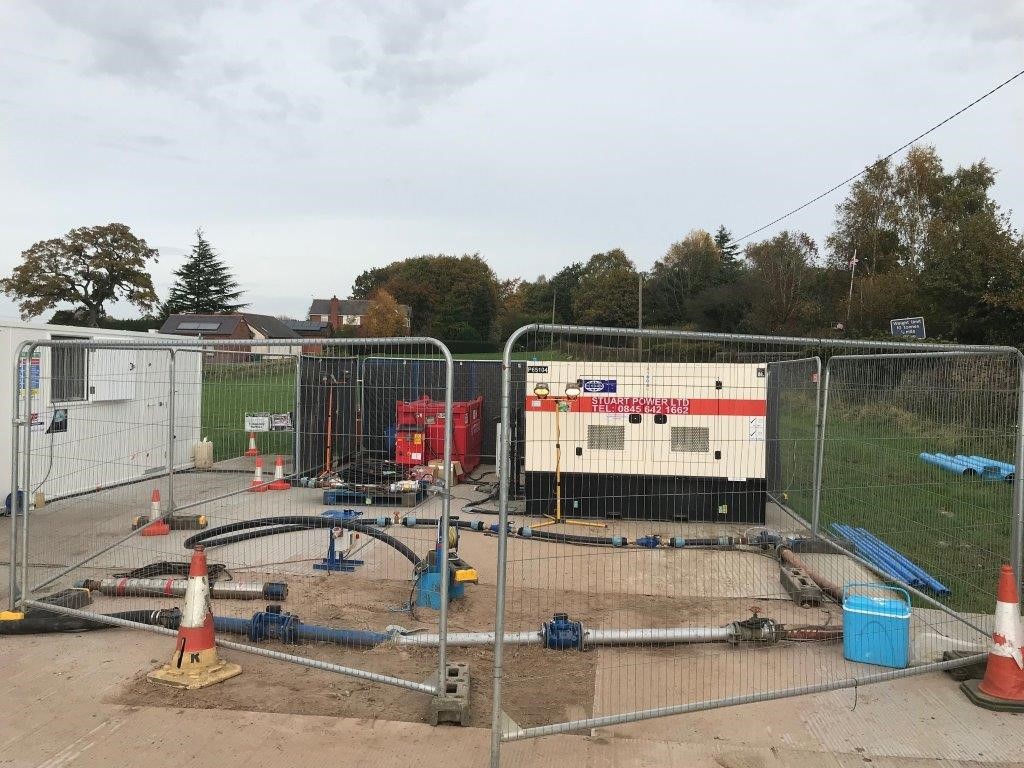
Constant Rate Test
During a Constant Rate Test, groundwater is abstracted at a maintained and constant flow rate throughout the testing period. During this water levels in the abstraction well will lower until stable or steady state flow conditions are reached. As the water level falls the control gate valve will need to be adjusted as the flow rate reduces against the increased head of the pump. Likewise, flow rates may be affected by boundary conditions.
Continuous active pumping tests are normally undertaken for a minimum 48 hours but can be extended into weeks. During this period, the abstraction flow rate and groundwater level in pumping wells and all monitoring wells are recorded at the following frequency.
| Elapsed Testing Time | Manual Monitoring Frequency |
| 0 to 10 mins | every 1 minute |
| 10 to 20 mins | every 2 minutes |
| 20 to 60 mins | every 5 minute |
| 60 to 100 mins | every 10 minute |
| 100 to 300 mins | every 20 minute |
| 300 to 1000 mins | every 50 minutes |
| 1000 to 3000 mins | every 100 minute |
| 300 mins + | to the end of test every 200 minutes |
Constant Head Test
A constant head test, also known as a constant draw-down or level test, is where a constant pumping water level is maintained in the abstraction well. As with a constant rate test, the control gate valve will need to be adjusted as the flow rate reduces against the increased head of the pump. All monitoring is undertaken at the same frequency as a Constant Rate test.
Recovery Test
The recovery test is carried out upon completion of the active pumping phase. The borehole pump is switched off and groundwater levels allowed to recover to 5% of their pre-test levels (or for a minimum of 24 hours) during which monitoring is undertaken at the frequency outlined above. An in-line non-return valve must be fitted to ensure no water flows back into the well when the borehole pump is turned off.
Groundwater Level Monitoring
Groundwater level monitoring is most often undertaken utilising downhole pressure transducers and manual water level dipping. Groundwater level monitoring can be undertaken for a pumping test or for any stand alone, long-term monitoring requirement.
Stuart Wells measure can measure groundwater levels manually and using a direct download or remote monitoring telemetry datalogger systems at required frequency.
Stuart Wells can also design, drill, install and operate telemetry Vibrating Wire Piezometers (VWP), most often utilised as a long term monitoring solution.
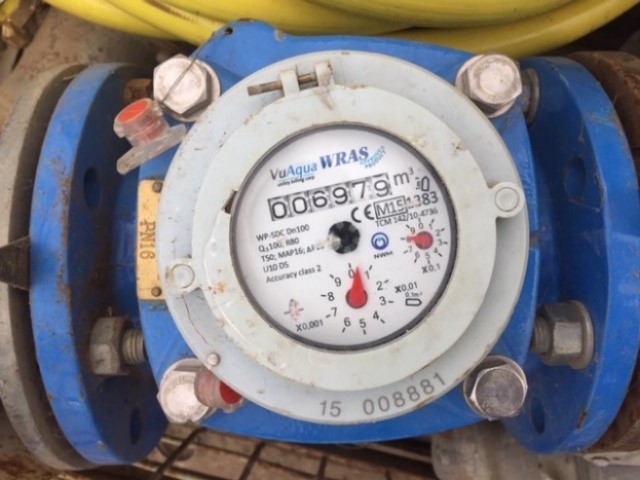
Flow Monitoring
Abstracted groundwater flow rate can be recorded and monitored using a flowmeter. Stuart Wells has an extensive stock of conventional radial or MAG flowmeters. All flowmeters are WRAS approved and calibrated. Remote monitoring of flow can be set, with regular uploads and access via a web-based portal.
Water Resource Monitoring
When undertaking Pumping Tests monitoring of water resources such as rivers, streams and springs within proximity is required. Stuart Wells have the capabilities to monitor flow and or levels at water resource location. Stilling wells can be installed and set up to remotely monitor all water levels. Acoustic sensor instrumentation can be set up to enable continuous measurement of water velocity and level in streams, rivers, and canals. Stuart Wells offer long term telemetry monitoring of groundwater and surface water points.
Rainfall Monitoring
Tipping bucket Rain Gauges connected to an electric datalogger can monitor and record long and short term precipitation throughout pumping tests.
Independent Rain Gauges can be established and set-up in conjunction with long term telemetry monitoring to determine rainfall effects on groundwater and surface water resources.
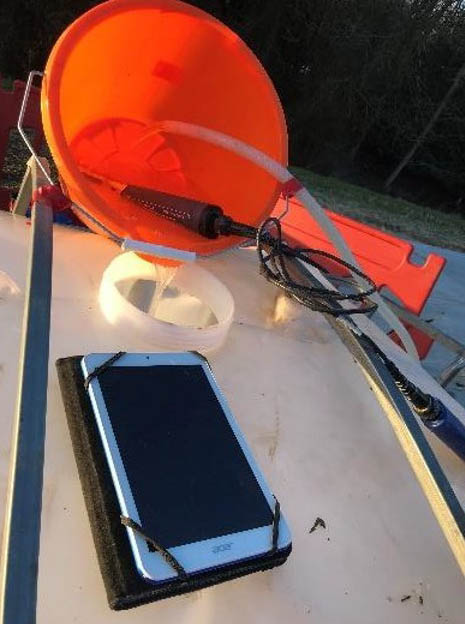 Groundwater Sampling
Groundwater Sampling
Stuart Wells has established relationships with major UK based Laboratory’s and conducts all Groundwater Sampling in accordance with BS ISO 5667-3:2018.
Field Parameter Water Quality Data
For quick and continuous monitoring of water quality field measurements such as pH, Redox Potential, EC, Dissolved Oxygen, Turbidity, and temperature. An Aqua Troll instrument or similar sensor instrument is used within an in-line low-flow cell arrangement with data logger on or after the wellhead. Water passing through the flow cell will either be diverted back down the well or into a storage container.
Factual and Interpretive Reporting
A factual report will be provided as standard detailing all site works and data collected. Data is submitted in excel and provided in AGS 4.0 format, of which Stuart Wells are registered users. If required, an interpretive report can be produced with modelled assessment of hydrogeological parameters. Technical design notes are submitted if related to a dewatering or groundwater control system.
Permission to Investigate a Groundwater Resource
In the UK, pumping tests and groundwater investigation come under the remit of national environmental regulations and require licensing. Government policy is enabling greater environmental management and control of groundwater resources.
Stuart Wells are proficient in obtaining and assisting in obtaining permission to investigate a groundwater resource. As a result of our experience, we are able to be proactive when designing solutions to combat licensing restrictions, such as groundwater recharge wells which prevent the need for groundwater being discharged to ground. Generally, our advice is to contact us as soon as possible to discuss the project and any regulatory implications.
In the UK there are slightly different regulatory positions depending on which part of the country the project is being undertaken. Links to more detailed and specific regulatory policies are as follows:
- England: Apply for a water abstraction or impoundment licence
- Wales: Groundwater investigation consent
- Scotland: Abstractions - Water resource authorisations and data returns
- Northern Ireland: Applying abstract or impound water
For further information and advice regarding abstraction licensing please do not hesitate to contact us.

